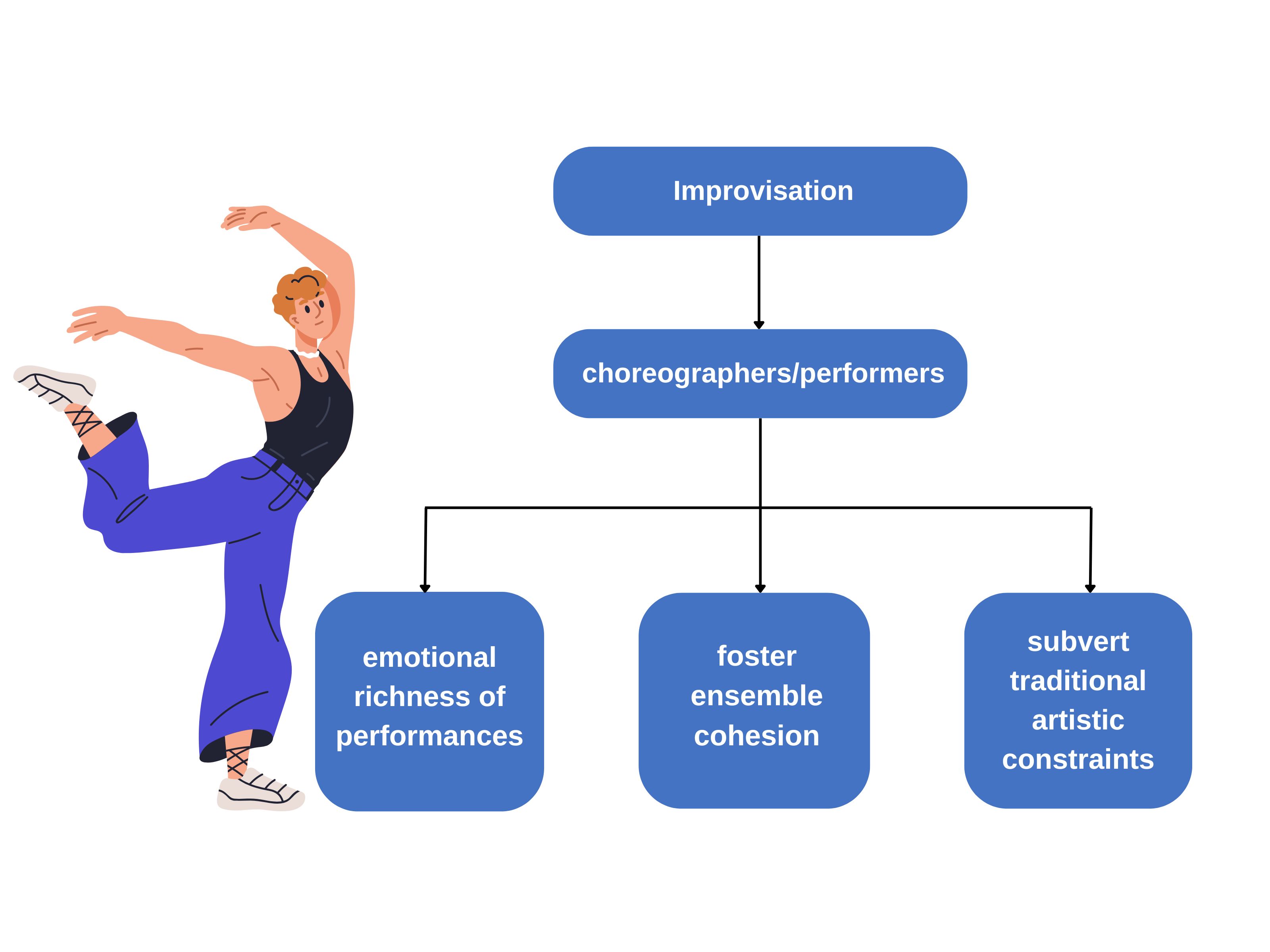Embracing Uncertainty: The Central Role of Improvisation in Contemporary Dance Artistry
Main Article Content
Abstract
Objectives: The primary objective of this research is to dissect the critical role of improvisation in the evolution and current practice of contemporary dance. The study seeks to trace the journey of improvisation from its peripheral status in traditional dance to its centrality in modern choreographic narratives, and to assess its influence on the creative process and performance aspects within contemporary dance.
Methods: Utilising a historical and analytical lens, the research begins with a retrospective analysis of improvisation's ascent from the rigid structures of courtly dance to its valorisation in contemporary form. Methodological scrutiny encompasses a review of pertinent literature and theoretical models, alongside case studies which illuminate the strategic and tactical dimensions imperative for adept improvisation in dance practice. This includes the cultivation of kinesthetic sensibility, the encouragement of risk-taking, the acceptance of vulnerability, and the intricacies of collaborative dynamics.
Results: The study's findings position improvisation as a catalyst for transformative change in contemporary dance, granting choreographers and performers a breadth of creative autonomy previously unattainable. It is found to contribute to the emotional richness of performances, foster ensemble cohesion, and subvert traditional artistic constraints. Additionally, the research delineates essential components for successful improvisation, such as congruence with artistic vision, precise assessment of dancers' improvisational proficiency, and achieving equilibrium between structured and spontaneous choreography. Significance is also attributed to the roles of transparent communication, preemptive injury mitigation, and the calibration of audience expectations for the successful incorporation of improvisational elements.
Applications of this study: The implications of this study are manifold for practitioners, choreographers, and educators within contemporary dance. It articulates a structural blueprint for embedding improvisation into choreographic and teaching methodologies. The insights gained also pave avenues for future scholarly enquiry within dance studies, advocating for continued innovation in artistic practice and deeper audience immersion. Fundamentally, the research reaffirms the indispensable contribution of improvisation to the vitality and continual reinvention of contemporary dance artistry.
Downloads
Article Details

This work is licensed under a Creative Commons Attribution-NonCommercial-NoDerivatives 4.0 International License.
References
Alishina, J. (2015). Butoh Dance Training. United Kingdom: Singing Dragon.
Albright, A. C., & Gere, D. (2003). Taken by Surprise: A Dance Improvisation Reader. United States: Wesleyan University Press.
Blom, L. A., & Chaplin, L. T. (1988). The Moment of Movement: Dance Improvisation. United States: University of Pittsburgh Press.
Butterworth, J., & Wildschut, L. (Eds.) (2017). Contemporary Choreography: A Critical Reader. United States: Routledge.
Chazin-Bennahum, J. (Ed.). (2005). Teaching Dance Studies. United States: Routledge.
Demircioglu. (2019). Improvisation in the Expressive and Performing Arts. Pennsylvania, United States: Jessica Kingsley.
Davies, J. (2023). The Art of Dance Composition. United States: Routledge.
Foster, S. (2010). Choreographing Empathy: Kinesthesia in Performance. United States: Routledge.
Foster, S. L. (1987). Reading Dancing: Bodies and Subjects in Contemporary American Dance. United States: University of California Press.
Foster, S. L. (2002). Dances that Describe Themselves: The Improvised Choreography of Richard Bull. United States: Wesleyan University Press.
Franklin, E. (2013). Dance Imagery for Technique and Performance. United States: Human Kinetics.
Goldman, D. (2010). I Want to Be Ready: Improvised Dance as a Practice of Freedom. United States: University of Michigan Press.
Hallam, E., & Ingold, T. (2008). Creativity and Cultural Improvisation. United States: Routledge.
Minton, S. C. (2007). Choreography: A Basic Approach Using Improvisation. United States: Human Kinetics.
Midgelow, V. L. (Editor). (2019). The Oxford Handbook of Improvisation in Dance. United Kingdom: Oxford University Press.
Morgenroth, J. (1987). Dance Improvisations. United States: University of Pittsburgh Press.
Nagrin, D. (1994). Dance and the Specific Image: Improvisation. United States: University of Pittsburgh Press.
Novack, C. J. (1990). Sharing the Dance: Contact Improvisation and American Culture (New Directions in Anthropological Writing). United States: University of Wisconsin Press.
Pallant, C. (2006). Contact Improvisation: An Introduction to a Vitalizing Dance Form. United States: McFarland & Company.
Zaporah, R. (1995). Action Theater: The Improvisation of Presence. California, United States: North Atlantic Books.


